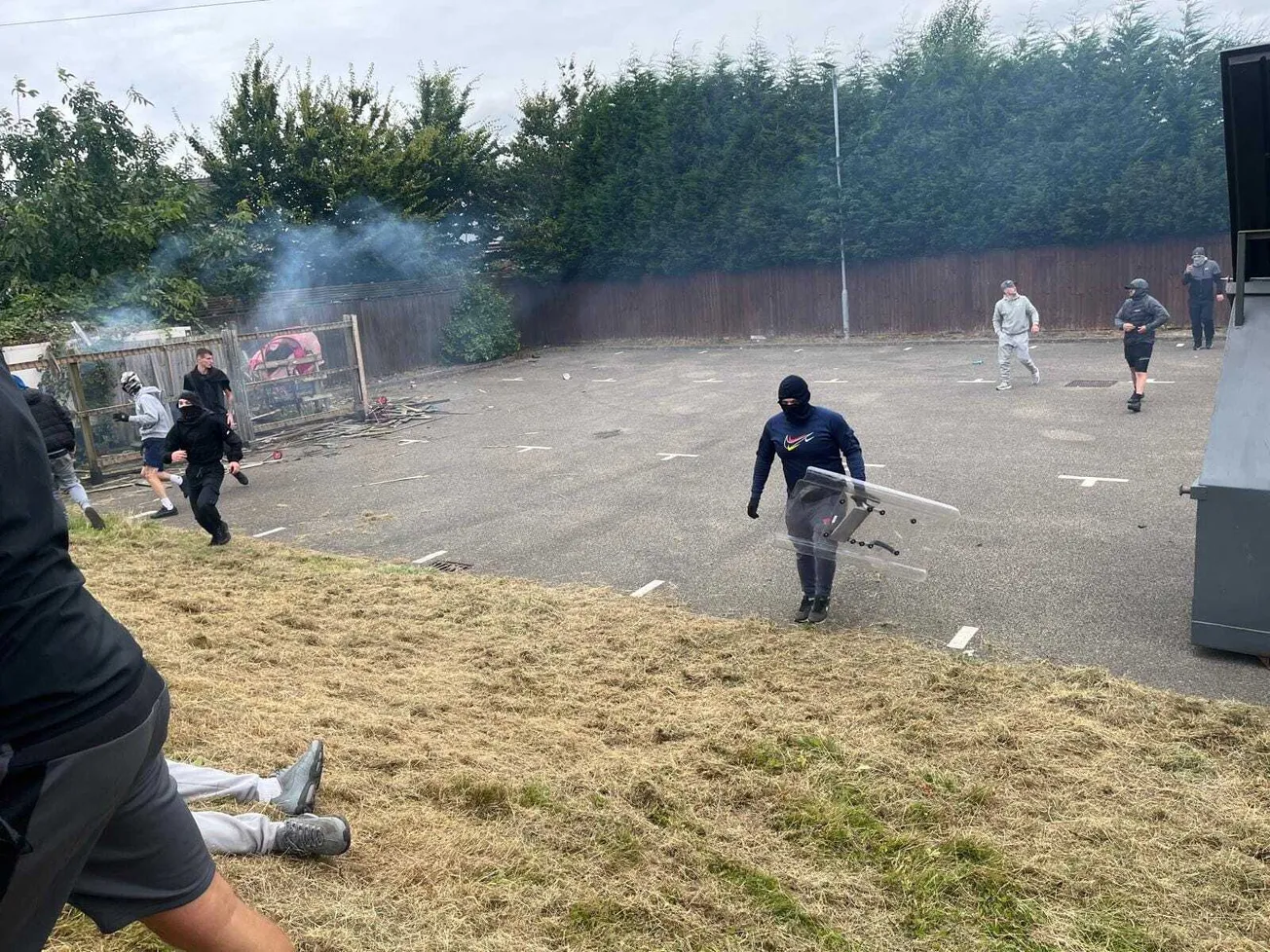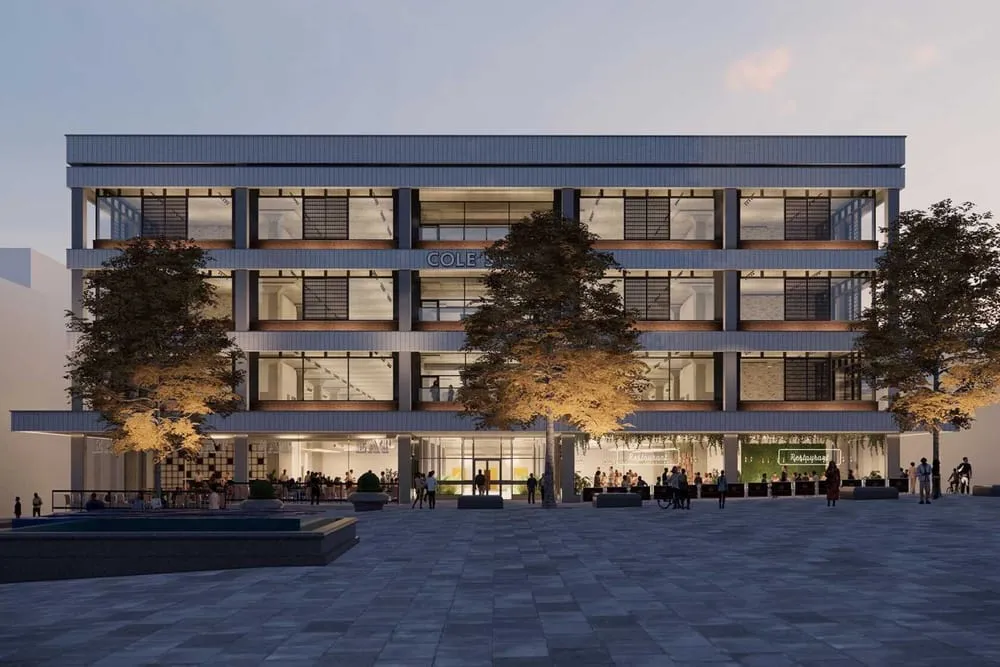Teacher John Ross, 60, of Walkley, was one of around 150 people from the organisation Stand Up To Racism who made the journey to Wath that day. At the beginning, the numbers of protesters and counter-protesters were about equal, but that quickly changed. “We were shouting slogans and singing to keep our spirits up but we realised we were heavily outnumbered,” he says. “We could see people were getting angrier and angrier.”
As the situation got more tense, word suddenly went around the group that the police were going to escort them to safety. As they were being led away, John says they ended up being stranded on a patch of grass adjacent to the hotel. Objects including beer cans started raining down on their heads. “That was the scariest bit because I couldn’t see how we were going to get out of the situation,” says John. “We were just surrounded by a few police and people were coming at us from all sides.”
A year on, he describes witnessing what happened on 4 August 2024 as a “really scary, traumatic and upsetting” experience. “I had never experienced that much hate directed towards me before,” he says. While there are some in the group who feel like they should have stayed, he believes they had little option other but leave. “We could have been seriously hurt if they had stayed,” he says. “But as we were leaving, everyone in our group was thinking ‘oh god, what is going to happen to the people in that hotel now?’”
I was there too. I originally went to Barker’s Pool to cover a planned anti-immigration “protest” there, but when I arrived there were lots of counter protesters with nothing to counter. So I hopped in the car and went to Wath, a small South Yorkshire town on the border of Rotherham and Barnsley. I got there at about 1.30pm, after John’s group had been escorted away. As I arrived, a missile flung from the crowd smashed one of the hotel’s windows. As it did, a massive cheer went up. The Battle of Manvers was underway.
Over the next two hours I watched in horror as a mob of around 1,000 people fought with police, threw countless missiles at the hotel, attempted to burn it down by setting fire to an industrial bin and pushing it against the building's fire escape, and then destroyed a nearby electricity generator. Only after around an hour and a half did police regain some semblance of control. By that time the place resembled a war zone.
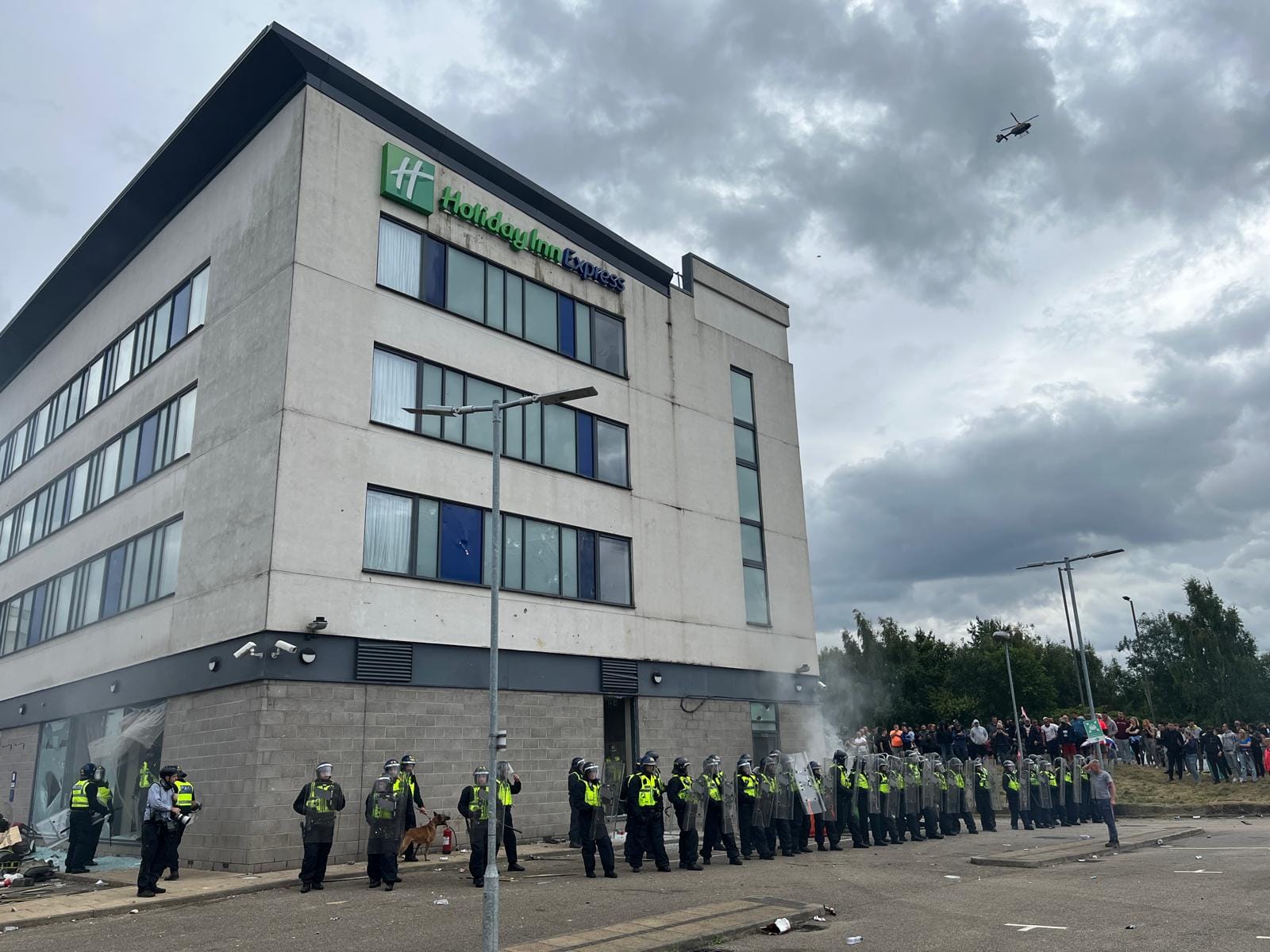
A year on, I go back to the Holiday Inn Manvers. The hotel is open again — the asylum seekers have been moved out — and a few people come and go carrying cases to their cars. The visible damage caused last August has largely been repaired, but there are also subtle differences. Metal fencing covered by fake green leaves has been installed to replace the wood fence panels that were torn down and used as weapons against the residents and police. Looking closer, I can still see the damage around the fire door where the rioters tried to set fire to it. On the other side of the car park, the generator they attempted to set on fire is still boarded up.
The hotel is on the edge of Manvers, a middle-class housing estate built on the site of the former Wath Main and Manvers Main collieries. Where once were pit heads and slag heaps is now a modern housing estate built around a picturesque lake. On a warm, sunny day not unlike the day of the riot last August, it feels almost idyllic.
Given the public nature of Manvers' descent into lawlessness, it’s unsurprising that many in the area want to pretend it didn’t happen. “I don’t want to talk about it, sorry,” one woman from the estate mumbles as she rushes away. Trying a different tack, I chat with another woman about what it’s like to live in the area, but as soon as I pivot to the riot she says she doesn’t “want to get into politics”. Outside the Bluebell pub opposite the hotel, a man walking out waves me away before I even get a question out. “I’m not getting involved in that,” he says.
‘We just want to move on’
Walking around the lake I have a bit more luck. William McMurdo, 73 tells me he knows people who had relatives jailed, including an elderly lady whose son got nine years. However, he tells me that despite — or perhaps because of — the shocking nature of what occurred, people don’t talk about it much, as if a veil has been laid over the events.
Another man who doesn’t want to give me his name accepts that what happened wasn’t pleasant, but believes it was born of legitimate concerns, including people not being able to get homes and veterans being “treated like shit out on the streets”. He also says he heard rumours on social media about assaults carried out by the hotel residents, although he accepts he never saw any concrete proof of this. “People just didn’t feel safe with them swarming around here,” he says of the hotel’s former residents.
Another issue in the area is how those responsible for the riot have been dealt with, with many getting lengthy custodial sentences. Have the people involved been harshly treated, I ask. “You get the feeling you can’t protest peacefully any more,” he says. “I know that what happened at the hotel wasn’t, but…”

Bob Wilson lives in nearby Kilnhurst but his son lives on the Manvers estate. He had also heard rumours about the people at the hotel, in his case that they had been shoplifting at the local supermarket, but again he doesn’t know if there is any truth to them. He accepts that the riot has brought shame upon the area, but believes that something did need to be done about immigrants costing taxpayers millions of pounds. “A lot of people I know are not racist but they begrudge paying a lot of money for people to stay in a hotel or on a barge.”
That day the first he heard about the riot was on the news. “When I turned it on I thought ‘that’s so and so’,” he says. “You don’t want to grass ‘em up but at the end of the day they were out of order.” While Bob thinks some of the rioters were harshly treated, he thinks many others got what they deserved. “If you’ve tried to burn a hotel down, that’s someone’s livelihood, someone’s property and they deserve a harsh sentence,” he says. Other things, like throwing objects at the police, were “out of order” but less serious, he says.
Bob started work as a miner in 1979 and did his training at Manvers Main itself, the colliery that now lies under the lake we’re walking around. He thinks what happened needs to be seen against a backdrop of economic hardship that has lasted now for 40 years. “A lot of these places haven’t recovered since the miners’ strike,” he says. “You go to places like Goldthorpe and Thurnscoe [where many of those involved in the riot came from] there are kids running around in nappies and houses with newspapers plastered in the windows.”
While there I also contact the Manvers residents’ association, whose email is posted up in the community noticeboard opposite the pub. A few days later an email drops in my inbox. “Thanks for making contact but I’m not available to speak,” it says. “Like everyone we just want to move on.”
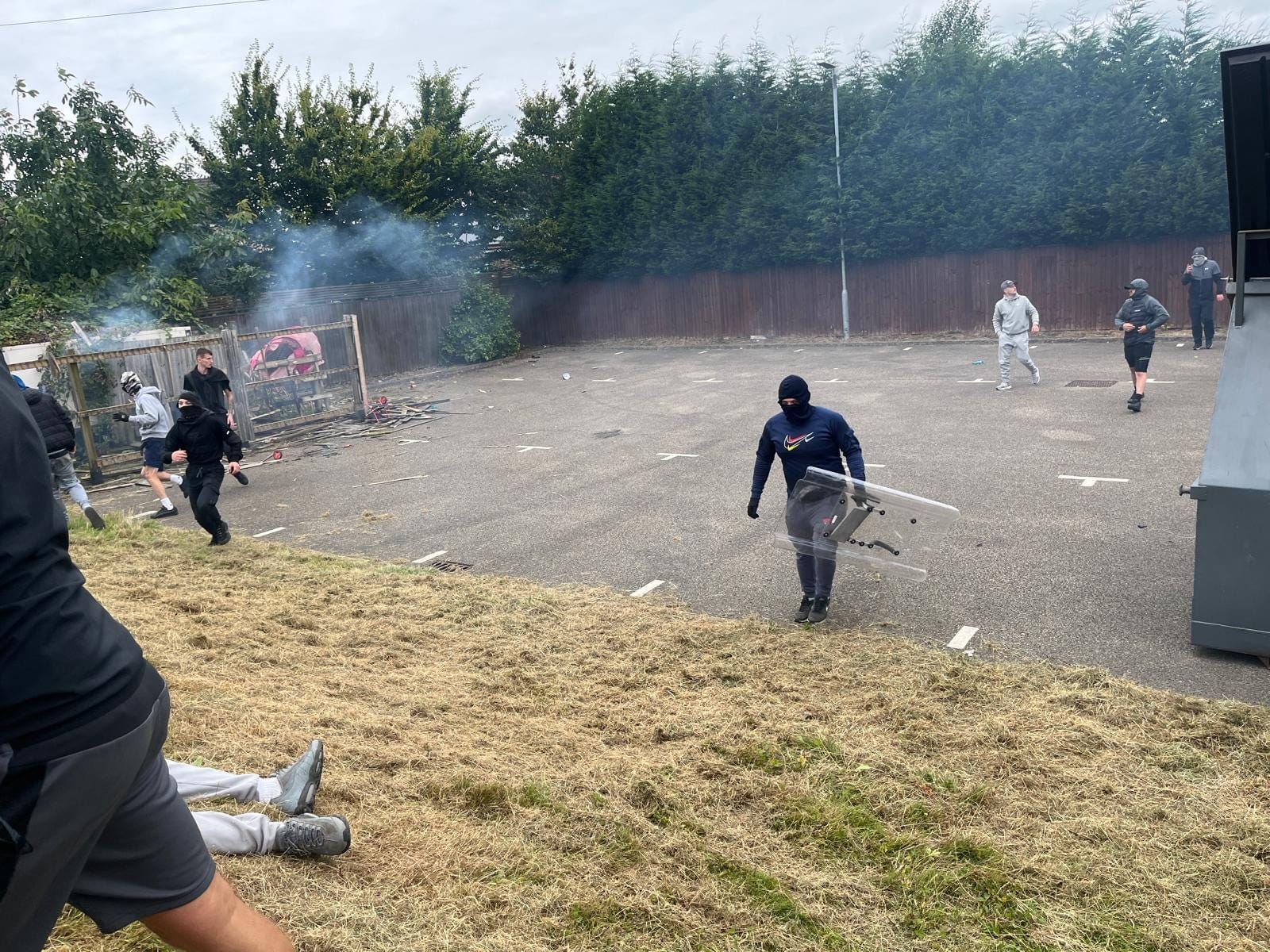
It’s harder for the community to do that when some of its members are still in prison. At the time of writing, there have been at least 96 convictions and 78 prison sentences — mostly for violent disorder, although eight people were found guilty of arson offences after an attempt to set the hotel on fire. The age of those convicted ranged from 64 (Michael Woods, jailed for two years for threatening to use his dog to attack officers) to just 13. Almost all are men and boys, although two girls also took part on the day: pregnant 19-year-old Elarna Garner-Abbey, who a judge noted was “right at the centre” of the disorder, and a 16-year-old who told the court she rioted to impress her crush.
The vast majority of those convicted were local, with only seven sentences handed to those from outside of South Yorkshire. The longest sentences, received by 27-year-old Thomas Birley and 31-year-old Levi Fishlock, were nine years. A court heard Birley was seen piling fuel onto a burning bin in a bid to light the hotel on fire, which left those inside fearing for their lives. Fishlock — also seen stoking the fire, as well as smashing the hotel’s windows and attacking police — told the officers sent to arrest him days later that his behaviour was “for a good cause”.
The riot that wasn’t
When the riots began last August, Mark Day was on his holiday with his wife Kim. Lying on a beach lounger in Mallorca, his phone began to ping. He’d heard the news from Wath, but suddenly things were much closer to home.
A list of immigration firms and refugee charities across the UK was being widely circulated on far-right social media channels. These were to be targets for a new wave of violence. And Mark and Kim’s business — White Rose Visas, in Broomhall — was on it. “Suddenly we were the main news story and it got very surreal,” he says. They sent staff home and got builders to board up the building. “The worst case scenario was that they would burn it down," he adds.
The situation was made stranger by the fact that White Rose Visas does very little asylum work apart from a few pro-bono cases; most clients are employers looking to secure visas for their employees. He’s still unsure about how and why the list was even drawn up. “There was some speculation that whoever had compiled it had just done a Google search for each city and the word ‘immigration’ and then picked the first company that came up,” he says.
Things turned out very differently to Manvers. Rather than hundreds of anti-immigration protesters, the office was surrounded by over 1,000 counter-protesters. Mark says he believes that between 10-20 people came to target their office, but thought better of it. “It ended up being a really positive atmosphere so it backfired on them,” he says. After, the boards stayed up for a week but Mark says he did worry for a while that someone might put a brick through the window.
Looking back he says it was a “weird and troubling” time but also that it was “extremely heartening” that so many people turned out to defend them. “You get a distorted idea of how widespread far-right sentiment is but it gave us an idea of what people's views really are,” he says. “The former tend to shout a lot louder and so get granted a lot more airspace.”
The next Manvers
Was 2024 just a wild summer, never to be repeated? It would be comforting to think so. There are signs that the lengthy sentences handed down have somewhat deterred potential future rioters. One image circulating on far-right social media, which calls for people to protest outside migrant hotels nationwide on August 8th, makes clear there should be “no masks, no alcohol” and that the demonstrations should be “100 percent peaceful”. It remains to be seen if those who attend will listen.
A repeat in Manvers is highly unlikely. After all, the hotel no longer houses migrants. In one sense, the rioters achieved their aims.
But in the last year there have been warning signs elsewhere in South Yorkshire. According to a website tracking which hotels are being used to house asylum seekers, there are two locally — one in Sheffield and one in Doncaster. Both have recently been targeted by Youtubers engaging in “hotel monstering,” in which members of the public film hotels, harangue staff who ask them to leave and accuse the hotels’ residents of various crimes.

In a video filmed at the Sheffield hotel in March, a group of people barge into the lobby and, when asked to leave, insist they have a right to be there because they pay taxes. “Residents in this area have contacted us because there’s been sexual assaults and harassment by migrants in this hotel,” one tells the baffled staff, while another adds that they have “just bought some rape alarms to give out”. As they finally leave, one mutters of the hotel staff: “How could you do that job? Traitors in that building.”
In a video outside the Doncaster hotel four months ago, what appears to be many of the same Youtubers demand to know when the hotel will reopen to the public, as two South Asian security staff politely ask them to leave. One barks at the staff to “speak English,” while another scoffs at the five-star food hygiene sticker posted in the window. “I don’t believe that.” When one of the security guards points out they are invading a private site, those gathered erupt in outrage. “How ironic! We’re invading our own country!”
And just last week Sheffield council were forced to quash rumours that the DoubleTree Hilton hotel near Batemoor was being used by the Home Office to house asylum seekers. When I drive up I can’t even get into the car park due to metal railings and a security guard blocking the entrance. Has he been stationed there because of the rumours, I ask? “Partly, yes.”
“We’ve had lots of people turning up saying there saying there are asylum seekers in there — and near a school as well,” he says. “I can tell you [that] if they were, they would be better sleeping on the streets, as I’ve seen the inside and it’s not pretty. It’s being totally refurbished.” But later the same day on the Only in Greenhill Lowedges and Greenhill Facebook group, an anonymous member posts: “Double Tree now closed for illegals moving in.”
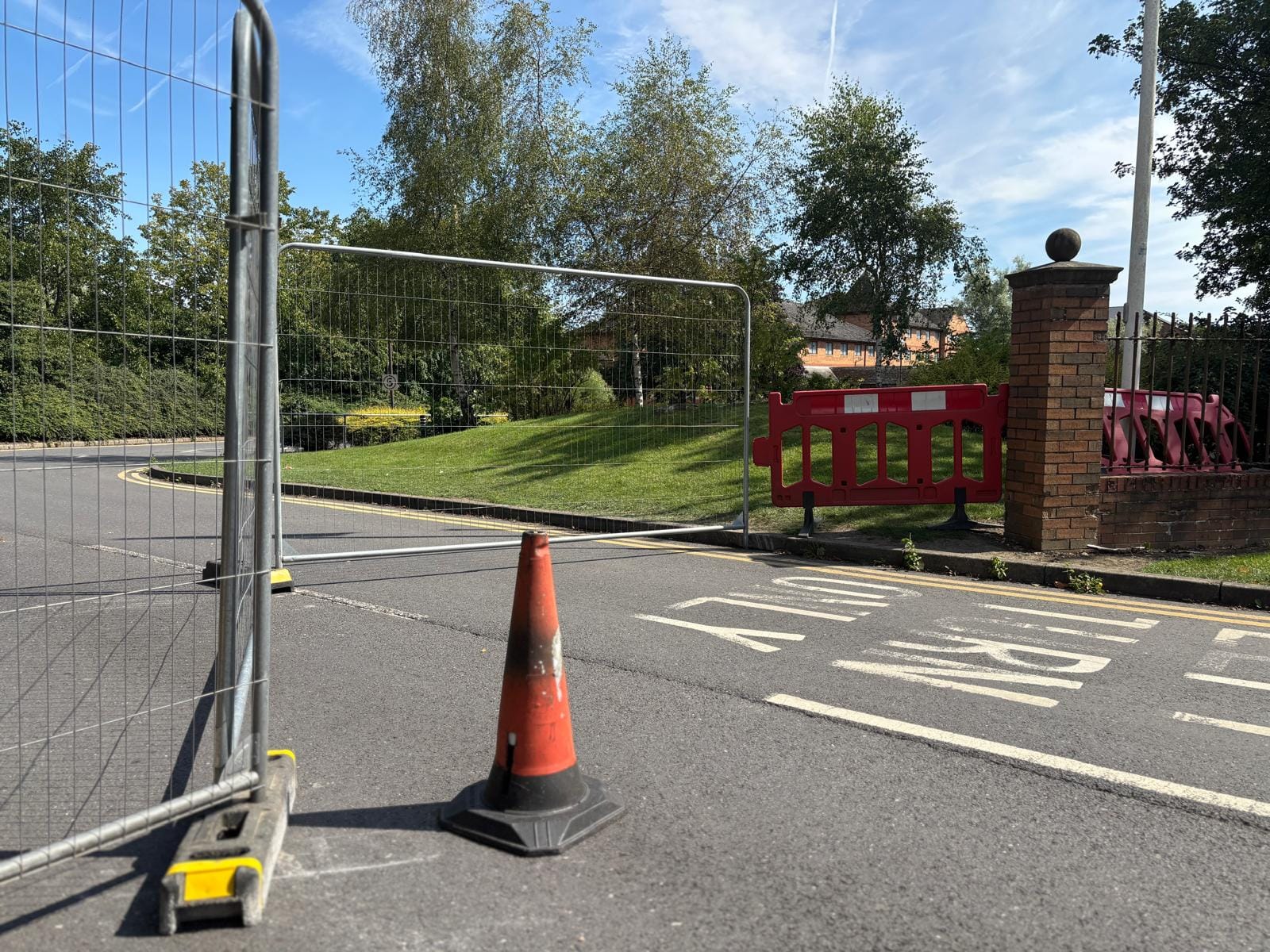
I can understand why some people want to forget what happened. I do. Going back to Wath this week was like reliving a bad dream. It remains the most distressing thing I’ve seen in my ten years in journalism, and in the days and weeks afterwards I found myself becoming upset again as I relived the experience.
Now, things appear to be back to normal: the Holiday Inn Express is just another hotel, and Manvers is just another housing estate.
But the sensitivity I encountered from locals shows the riots remain very close to the surface. And just as there were warning signs before 4 August 2024, there are warning signs now. Unless we face up to what happened there and why, the Battle of Manvers may be remembered as the first conflict in a longer war.
If you’d like to sponsor editions of The Tribune and reach over 30,000 readers, you can get in touch at grace@millmediaco.uk or visit our advertising page below for more information
Comments
How to comment:
If you are already a member,
click here to sign in
and leave a comment.
If you aren't a member,
sign up here
to be able to leave a comment.
To add your photo, click here to create a profile on Gravatar.


